Tractor Agriculture is focusing on a topic called How to Fill Tractor Tires with Water and Calcium Chloride. This question came in one of the exams I had applied after completing my bachelor’s degree. While writing, I am feeling happy alongside reviving some of my childish memories.
Now the Question arises, why do we need to add water or calcium chloride to tyres?
The answer is that we need to add weight to the tyres to avoid tire slippage. There are different ways to add weights to the tyres i.e. foam, fluid or cast iron weight can also be used.
Today, we will explain how to fill tractor tyres with water and calcium chloride which ultimately helps in increasing tire life.
Sometimes we have to fill water or liquid inside the tires and there are some ways which have to be followed to accomplish this process. The Tractor Tires go through regular wear and tear with regular usage.
How to Fill Tractor Tires (Download pdf )
How to Fill Tractor Tires with Water and Sodium Chloride from Tractor Agriculture
For filling tire with water or calcium chloride, follow the below listed steps.

Finally, remove the tyre.
The same steps should be followed for filling the water in second tyre. To fill tractor tires with water, the water has to be put in tire tube with the help of a pump or by gravity.
Another important condition that has to be met when you are about to fill tractor tires with water is that the water inside the tube should fill only 75% of the space and the rest of the space should be filled with air. This condition is necessary during the filling process.
The air inside the tube is important as it facilitates cushioning effect and absorbs any shock.
How to Empty the Tube after filling tractor tires
After you have been able to fill tractor tires with water, you need to empty the tube.
To empty the tube, you should turn the tyre in such a way that valve is at the bottom. Remove the valve and automatically water will start coming out. The complete draining process of tube will only be possible if tube is removed from the tyre.
There are some precautions that you need to follow: The tires with water in them should be checked more frequently as compared to air filled tires. Also, the pressure should only be checked when the valve is in top position.
In countries that have freezing point temperatures, the water cannot be put in tyres easily. The reason is water gets frozen inside the tyre due to very low temperatures.
The alternative to water in cold countries is calcium chloride solution. The advantages of using calcium chloride are listed below:
Some precautions have to be taken while using calcium chloride solution. These are:

If a Nacl2 solution is not available, then common salt can be used as an alternative. The above stated precautions should be followed with common salt too. Do share this information with your friends and spread the required information.
When all farm tires were bias-ply construction, choosing the right ballast -- in most cases, calcium chloride -- was easy. But things are changing now that more tractors are leaving the factory with radial tires.
Some tiremakers advise against putting calcium chloride in radial farm tires. "We do not recommend calcium chloride (in radials)... due to power hop," says Len Wagner, manager of field engineering for Firestone Agricultural Tire Co. (FATC). Continental Tire North America Inc. officials say their radial farm tires perform better with air in them than with liquid ballast. "Our preference is dry, or cast, weight on tubeless tires," according to Goodyear.
Many tractor manufacturers feel the same way. For example, John Deere & Co. tells farmers to attach cast-iron weights to their tractors for ballast.
But don't count calcium chloride out yet. Almost every farm tire manufacturer makes bias-ply ag tires, and there are plenty of them in the field. "Calcium chloride can be used in any bias farm tire," Wagner says. In fact, the companies that build farm tire service trucks even report that sales of calcium chloride pumping systems on new orders are steady, and, in one case, slightly up.
Steady demand
"Many farmers are comfortable with calcium chloride ballast because that's what dad used," says Neil Raysen, Continental's farm tire specialist. Some, he adds, are unwilling to switch to dry weights due to their cost.
Fifty-percent of Leroy, Minn.-based tire dealer Randy Estervold's farm tire customers still demand liquid fill. "The large grain farmers with their big, new tractors don't use it much, but the smaller farmers with 'chore' tractors still do."
Chore tractors -- older units used year-round to tow food out to livestock, pick up bales and clean feed lots -- need all the traction they can get, he says. "I have a 7,000-gallon tank of calcium chloride at my dealership and it's just half-full right now." Each of the long-time dealer's seven farm tire service trucks is equipped with a pumping system and a 400-gallon tank.
Estervold says he sometimes pumps calcium chloride into a radial farm tire if the soil is saturated with water.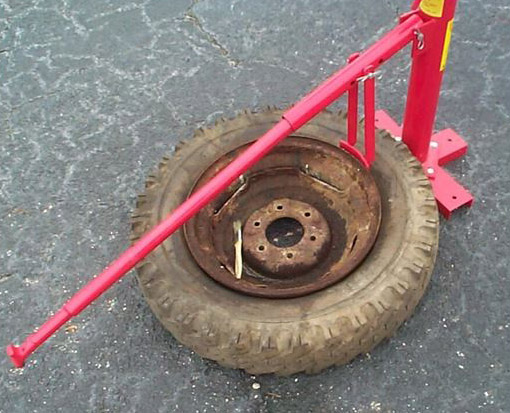 "This will help the farmer (avoid) slippage. But when the soil turns dry, I evacuate the calcium chloride so he can get the full benefit of radial-ply technology."
"This will help the farmer (avoid) slippage. But when the soil turns dry, I evacuate the calcium chloride so he can get the full benefit of radial-ply technology."
Don Nebelsick, president of Don's Tire & Supply in Abilene, Kan., is more blunt about the use of calcium chloride in radials. "The effect of putting liquid ballast into a radial is to turn it into a bias-ply tire!"
Pumping liquid ballast into a farm radial "stiffens the sidewall, which, in turn, creates a narrower footprint. It defeats the (other) technologies built into radial farm tires such as fuel savings, more draw-bar pull, smoother ride and the ability to work more unit area per gallon of fuel."
However, 60% of the farmers in Nebelsick's market still use liquid ballast -- in his case, a pre-mixed saline solution that's "about half as corrosive as calcium chloride. Generally, I like to fill a tire to 75%, or 140 gallons, with (the) solution." The liquid is good down to temperatures of 75 degrees below zero, he says.
"My job is to keep the tractor as light as possible so it can do the work it needs to do without compacting the soil." Part of that equation involves the weight split between a tractor's front and rear axles.
"Weight split is critical to farm tire work," Nebelsick says, "so I need to know the type of work being performed to make the necessary adjustments. If the front axle needs to be lighter for a job like spraying, I evacuate ballast from the tire. If I need to add weight at the rear axle for heavy torque work like ripping, I may pump ballast into the tire or tires."
Weight split and ballast formulas can be calculated in various ways, according to the dealer. "It can be done by using engine horsepower and it can be done by taking the tractor to a grain elevator and weighing the machine.
"In a common 75%-fill application, the ideal tire inflation pressure will be somewhere between 6 psi and 14 psi, enough to support the load on the (bias-ply) tires while allowing the farmer to complete his field work.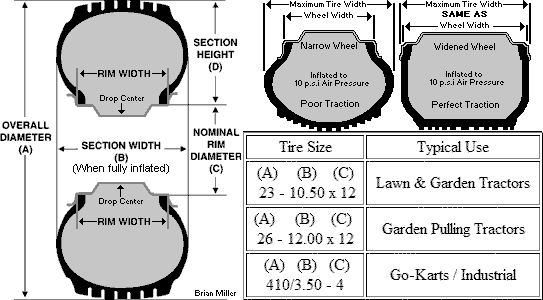 "
"
Nebelsick foresees a move away from calcium chloride due, in part, to the mechanically assisted front-wheel drive tractor. "(Farmers) can order suitcase weights for mounting on a bracket at the front of the tractor and cast weights bolted on the rear axle."
Liquid ballast tips
Ultimately, the decision to use or not use liquid ballast is situational. A big grain farmer has different needs than a small, "weekend" farmer. And differences in soil types from state-to-state, changes in weather patterns, temperature extremes and regional needs and preferences all play major factors. So does tractor age, according to a Goodyear official. Many farmers have two, three or more old tractors around, he says. "They don't junk a tractor just because they bought a new one."
Safety is the first consideration in choosing materials for ballast, according to FATC. The company recommends a mixture of calcium chloride and water. It also approves mixing "permanent-type antifreeze (glycol base) solutions for optimum ballasting and freeze protection. "
"
But FATC and other manufacturers agree that under no circumstances should methanol, ethanol, alcohol, gasoline, propane or any other flammable substance be used.
Goodyear offers these guidelines:
* Plain water may be used where freezing never occurs.
* In cold climates where freezing occurs, calcium chloride flakes can be added at the strength of 3.5 pounds per gallon of water.
* For extremely cold climates, use five pounds of calcium chloride per gallon of water.
* Fill tires up to 75% or valve level, with the valve at the 12 o'clock position. Exceeding that limit causes the tire to become more susceptible to impact breaks.
* For a softer ride and better power hop control, a 40% fill rate at the four o'clock position should not be exceeded.
* Rinse rims used without tubes immediately after demounting the tire to prevent rapid corrosion.
When removing ballast, wet or dry, be sure to maintain the tractor's proper weight split on front and rear axles.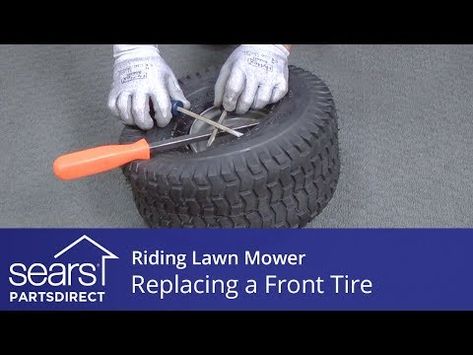 Commonly, this is 25% front and 75% rear on two-wheel drive tractors, 40% front and 60% rear on mechanically assisted front-wheel drive tractors, and 55% front and 45% rear on four-wheel-drive tractors.
Commonly, this is 25% front and 75% rear on two-wheel drive tractors, 40% front and 60% rear on mechanically assisted front-wheel drive tractors, and 55% front and 45% rear on four-wheel-drive tractors.
(In photo: Dave Hanna of Millersburg (Ohio) Tire Service Inc. has been servicing farm tires since he started with the company in 1986. Prior to that he spent years watching his dad do the same thing for the dealership. Now Dave and another Millersburg technician service nearly 1,500 farmers year-round out of two trucks. "Ninety-eight percent of what we do is ag," he says. And that includes filling tires.)
Years ago, American farmers discovered that adding weight greatly improved tractor performance.
One of the benefits is improved grip. When a tractor pulls a heavy plow or disc in viscous arable land, the drive wheels usually lack traction and skid.
Additional ballast increases tractor inertia, smooths out jerks and saves expensive equipment.
The load distribution along the axles is as follows: conventional tractors - 25% on the front axle and 75% on the rear. Mechanical front-wheel drive tractors - 40% on the front axle and 60% on the rear. Tractors with four-wheel drive - 55% on the front axle, and 45% on the rear. nine0003
By adding extra weight to the rear axle, the tires can pull more weight without losing traction. Usually, the driving tires of the tractor are filled, which improves the traction characteristics, the ribs of the tire are better hooked on hard ground.
To ensure longitudinal stability, additional weights are used and water is poured into the tires of the tractor guide (front) wheels. It is preferable to hang removable cast-iron weights, but water is more economical.
Normal water can be used, but it freezes in the cold. Antifreezes based on ethylene glycols and alcohol are also used, but such liquids are too expensive. Successfully used calcium chloride, obtained in powder and mixed with water (30% by volume) before refueling.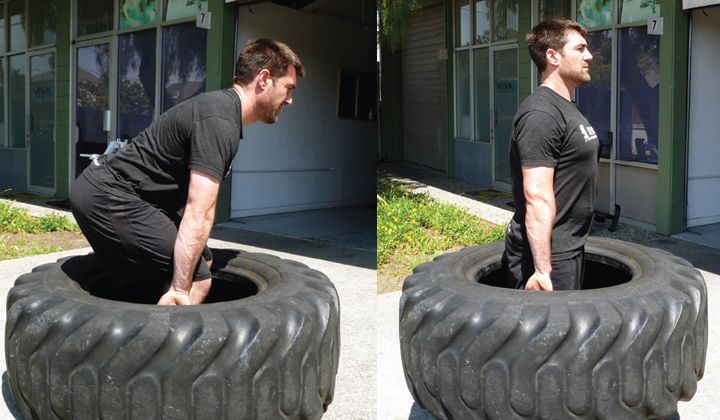 Its disadvantage is the likelihood of corrosion, so it is recommended to pour it into the tractor tube tire. nine0003
Its disadvantage is the likelihood of corrosion, so it is recommended to pour it into the tractor tube tire. nine0003
Even inexpensive glass washer fluid is sometimes used. In extreme cases, plain water with salt is poured.
Tractor tire fluid also helps improve heat transfer and more even distribution of excess heat generated in the tire during intensive work.
On older tractors, it was recommended to refuel only the outer tires of the tractor's dual wheel, on modern tractors it is recommended to evenly distribute the mass of liquid on both wheels. It is not recommended to fill radial tires more than 40%. nine0003
For more precise information on axle load distribution, please contact the tractor manufacturer or dealer.
Ballasted anti-freeze liquid usually remains in the tractor wheel for the entire life of the tire. The fluid in the tire has nothing to do with wheel balancing and is used only on tractor equipment.
The weight table is based on the assumption that 75% of the tire volume will be filled with water (by valve level). The use of anti-freeze chemicals can affect the mass of the fluid. nine0003
The use of anti-freeze chemicals can affect the mass of the fluid. nine0003
Tires for agricultural tractors (arable land)
| Tire size | Water, liters | Additional weight per tire, kg |
|---|---|---|
| 4.00-12 | nine | 37.4 |
| 4.00-15 | nine0046 eleven46.2 | |
| 4.00-19 | fourteen | 55 |
| 5.00-15 | 15.9 | 63.8 |
| 5.50-16 | 23 | nine2.4 |
| 6.00-12 | 20.45 | 81.4 |
| 6.00-14 | 23 | 90.2 |
| 6.00-16 | 27 | 110 |
| 6.50-16 | 32 | 127.6 |
| 7.50-10 | 27 | 110 |
7.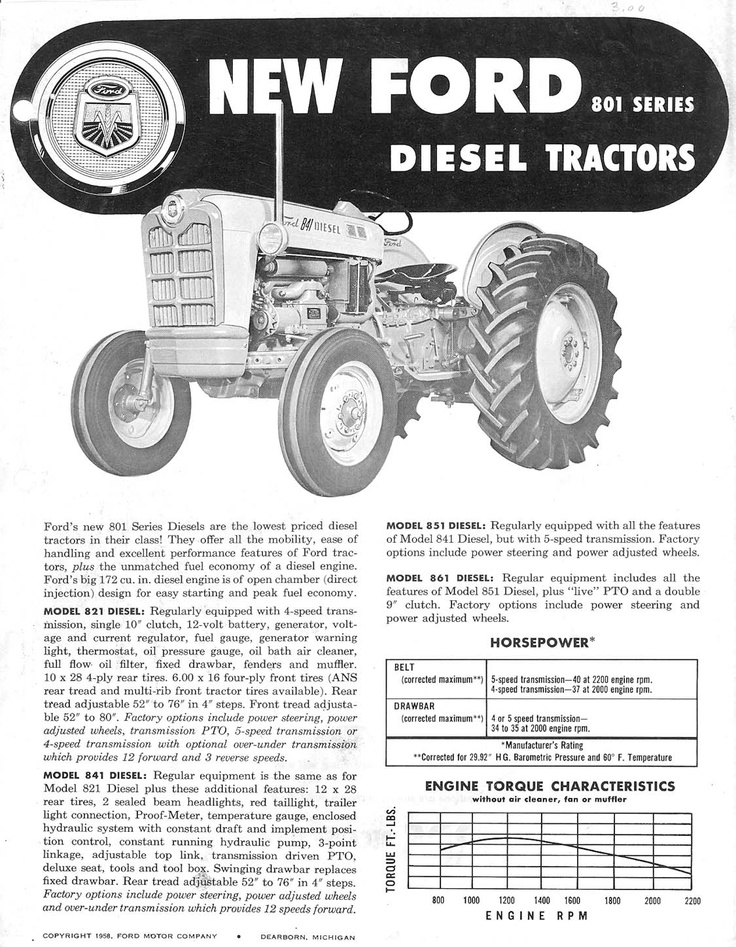 5L-15 5L-15 | 36 | 145.2 |
| 7.50-16 | 41 nine0047 | 165 |
| 7.50-18 | 45 | 182.6 |
| 7.50-20 | 50 | 202.4 |
| 9.00-10 | 41 | 165 | nine0044
| 9.5L-15 | 50 | 202.4 |
| 9.50-20 | 82 | 330 |
| 9.50-24 | 91 | 367.4 |
| 10.00-16 | nine0046 77312.4 | |
| 11.00-12 | 82 | 330 |
| 11L-15 | 59 | 237.6 |
| 11.00-16 | 105 | nine0046 422.4|
| 11L-16 | 68 | 270.6 |
| 14L-16.1 | 123 | 495 |
16. 5L-16.1 5L-16.1 | 191 | 761.2 nine0047 |
| 7.2-24 | 41 | 165 |
| 7.50-16 | 41 | 165 |
| 8.3-24 | 59 | 237.6 |
| 9.5-16 | nine0046 55220 | |
| 9.5-24 | 77 | 312.4 |
| 9.5-36 | 114 | 459.8 |
| 9.5-42 | 132 | 532.4 nine0047 |
| 10-16.5 | 55 | 213.4 |
| 11.2-24 | 109 | 440 |
| 11.2-28 | 123 | 495 |
| 11.2-34 | 150 | 605 |
| 11.2-36 | 159 | 642.4 |
| 11.2-38 | 164 | 660 |
12.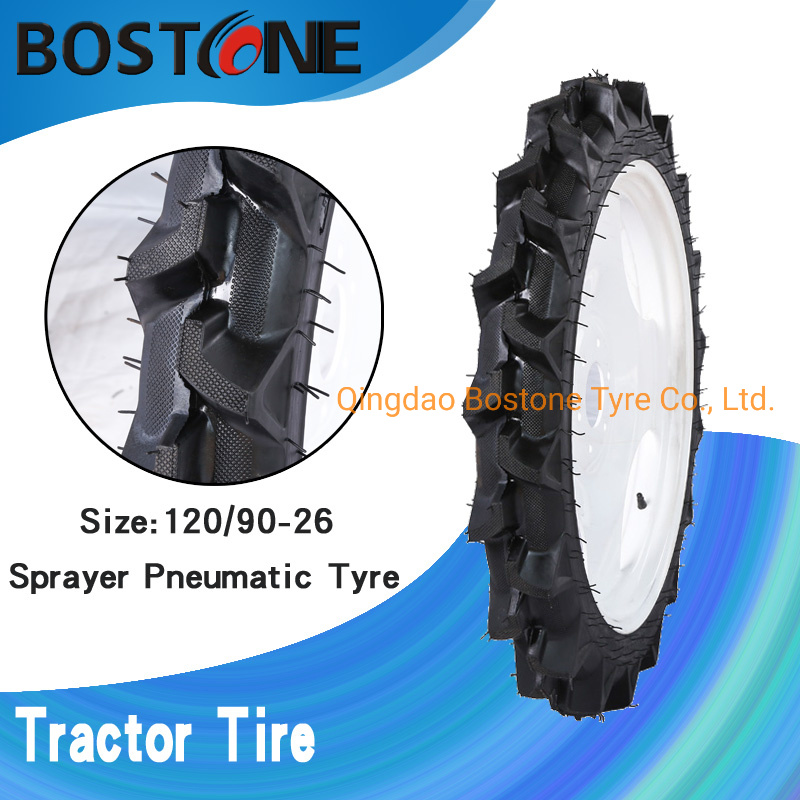 4-16 4-16 | 95 | nine0046 385|
| 12.4-24 | 136 | 550 |
| 12.4-28 | 159 | 642.4 |
| 12.4-36 | 200 | 807.4 |
| 12.4-38 | 209 | 844.8 |
| 12.4-42 | 232 | 935 |
| 13.6-24 | 173 | 697.4 |
| 13.6-26 | 182 nine0047 | 734.8 |
| 13.6-28 | 195 | 789.8 |
| 13.6-38 | 259 | 1045 |
| 14.9-24 | 214 | 862.4 nine0047 |
| 14.9-26 | 218 | 880 |
| 14.9-28 | 241 | 972.4 |
| 14.9-30 | 259 | 1045 |
14. 9-36 9-36 | 291 | 1174.8 |
| 14.9-38 | 305 | 1229.8 |
| 15.5-38 | 300 | 1210 |
| 16.9-24 | 277 nine0047 | 1119.8 |
| 16.9-26 | 295 | 1192.4 |
| 16.9-28 | 314 | 1265 |
| 16.9-30 | 332 | 1339.8 nine0047 |
| 16.9-34 | 373 | 1504.8 |
| 16.9-38 | 409 | 1652.2 |
| 17.5L-24 | 250 | 1009.8 |
| 18.4-16.1 | 223 | 899.8 |
| 18.4-24 | 341 | 1377.2 |
| 18.4-26 | 359 | 1449.8 |
| 18.4-28 | 382 nine0047 | 1542. 2 2 |
| 18.4-30 | 405 | 1632.4 |
| 18.4-34 | 455 | 1834.8 |
| 18.4-38 | 500 | 2017.4 nine0047 |
| 19.5L-24 | 332 | 1339.8 |
| 20.8-34 | 582 | 2349.6 |
| 20.8-38 | 636 | 2569.6 |
Turf tires
| Tire size | Water, liters | Additional weight per tire, kg |
|---|---|---|
| 23×8.50-12 | 27.3 | 110 |
| 23×10.50-12 | 31.8 nine0047 | 127.6 |
| 26×12.00-12 | 45.5 | 182.6 |
| 25×8.50-14 | 31.8 | 127.6 |
| 25×7.50-15 | 27. 3 3 | nine0046 110 |
| 25×10.50-15 | 31.8 | 127.6 |
| 25×12.50-15 | 36.4 | 147.4 |
| 27×8.50-15 | 31.8 | 127.6 nine0047 |
| 27×9.50-15 | 40.9 | 165 |
| 27×10.50-15 | 45.5 | 182.6 |
| 29×12.50-15 | 63.6 | 255.2 | nine0044
| 31×12.50-15 | 81.8 | 327.8 |
| 31×13.50-15 | 86.4 | 347.6 |
| 31×15.50-15 | 90.9 | 365.2 |
| 33×12.50-15 | one hundred | 402.6 |
| 44×18.00-20 | 254.5 | 1047.2 |
© Text: Vladimir Sinkov, Starko St. Petersburg
Photo: Deere & Company
Return to list
home
Articles
TR 171 is a deep tread tire suitable for arable tractors. Thanks to its outstanding self-cleaning properties, this rubber is ideal for wet and wet conditions.
Thanks to its outstanding self-cleaning properties, this rubber is ideal for wet and wet conditions.
Even in the toughest working conditions, TR 171 tires guarantee excellent traction and unsurpassed durability. nine0003
The BKT TR-171 agricultural tractor tire has excellent traction and self-cleaning performance in wet soils and rice fields. The tread configuration helps push out mud, algae and straw.
The deep tread agricultural tractor tire features extra large lugs for increased performance and durability.
nine0032
Natural rubber tread provides better wear and tear resistance. Nylon (polymer) cord in the breaker (up to 12 layers) allows you to increase the strength of the tire, increases the service life. According to the American classification, the tire code is TRA R-1W+.
TR 171s are becoming increasingly popular with mud swamp racing enthusiasts, especially in the US.